What's New
Displaying results 1481 - 1490 of 4899
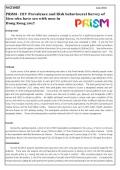
Resource | Fact Sheets,
Men having sex with men (MSM) have continued or emerged to account for a significant proportion of newly acquired HIV infection in many areas around the world, including Hong Kong. The first PRiSM (HIV prevention and risk behavioural survey of men who have sex with men in Hong Kong) study was conducted in 2006. It was the first community-based MSM and HIV study of its kind in Hong Kong. Designed also as a regular public health surveillance programme to track the epidemic and inform intervention, the survey was repeated in 2008 and 2011. Special Preventive Programme of the Department of Health (DH) conducted this fourth round of PRiSM from April to September 2017. The study aims to update on the HIV prevalence among MSM in Hong Kong, and inform on HIV/STIs preventive interventions and the profile of risk behaviours of local MSM.
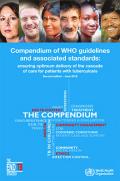
Resource | Guidelines,
The Compendium has been developed as a clear and concise instrument to facilitate the understanding and planning of delivery of high-quality care for everybody affected by TB. It incorporates all recent policy guidance from WHO; follows the care pathway of persons with signs or symptoms of TB in seeking diagnosis, treatment and care; and includes key algorithms and cross-cutting elements that are essential to a patient-centered approach in the cascade of TB care.

Resource | Publications,
This report details key results achieved in 2017 by UNICEF and partners – including children and young people themselves – and looks to the strategic challenges ahead. Against a backdrop of widespread conflict, instability and displacement, the report highlights UNICEF’s efforts to advance innovation, efficiency, transparency and financial stewardship in 2017. It also takes note of successful advocacy activities focused on child survival and health, early childhood development, violence against children, and child migrants and refugees. The report demonstrates UNICEF’s commitment to investing in the rights of excluded and disadvantaged children and young people, and providing them with opportunities to grow up healthy, educated and protected.

Resource | Publications,
The report sets out the status of women’s, children’s and adolescents’ health, and on health systems and social and environmental determinants. Regional dashboards on 16 key indicators highlight where progress is being made or lagging. There is progress overall, but not at the level required to achieve the 2030 goals. There are some areas where progress has stalled or is reversing, namely neonatal mortality, gender inequalities and health in humanitarian settings. The report also highlights new evidence with a special focus on early childhood development as a foundation for health and well-being across the life course. There are new estimates on the causes of death in children older than 5 years; most are preventable. Each section of the report highlights strategic priorities, interventions and approaches that could help countries address challenges and accelerate progress.
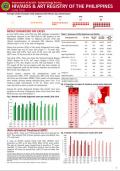
Resource | Fact Sheets,
In June 2018, there were 993 new HIV antibody seropositive individuals reported to the HIV/AIDS and ART Registry of the Philippines (HARP) [Table 1]. Eighteen percent (174) had clinical manifestations of advanced HIV infection (WHO clinical stage 3 or 4) at the time of diagnosis.
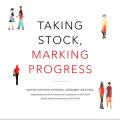
Resource | Publications,
This brochure highlights some of the key remarks made by Member States at this year’s gathering on the state of the worldwide response to HIV. While much progress has been made, there is a clear agreement that we still have a long way to go. The disproportionate effect of the HIV epidemic on young women and adolescent girls, and the slow uptake of HIV services by men and boys, are but a few of the challenges that need to be addressed.
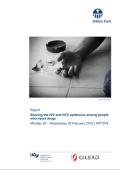
Resource | Publications,
Participants from many parts of the world, with different expertise and engagements with the Human Immunodeficiency Virus (HIV) and the Hepatitis C Virus (HCV) gathered at the Wilton Park facility of the United Kingdom Foreign and Commonwealth Office (FCO) on 26-28 February 2018 to consider ways of slowing the epidemics amongst people who inject drugs (PWIDs).
This meeting provided a timely opportunity to explore the impact of key global frameworks on reaching PWID with HIV and HCV prevention, treatment and care measures one year prior to the 2019 United Nations General Assembly Special Session on Drugs (UNGASS) to be held in New York. This report provides an overview of presentations and discussions, highlighting the most salient themes that emerged from the meeting.
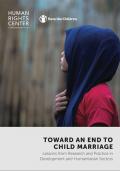
Resource | Publications,
The purpose of the study is to gather findings from efforts to prevent and respond to child marriage in both development and humanitarian contexts and determine what Save the Children and other organizations can do to improve their response to this critical issue. The study adds to existing research by synthesizing the most up-todate literature, bringing the voices of practitioners and experts into the discussion, and examining the topic of child marriage interventions in a humanitarian context for the first time.
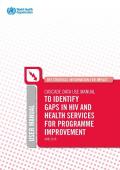
Resource | Tools,
This guide supports the use of data to identify and fill gaps in services in order to improve HIV and health programmes. Following from the Consolidated Strategic Information Guidelines, high-level indicators are organized along a cascade of services which are linked to achieve outcomes. The guide supports the ways in which these cascade data are analysed and used to identify gaps and better link services.
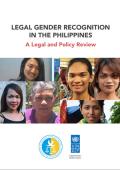
Resource | Laws and Policies,
The Legal Gender Recognition in the Philippines: A Legal and Policy Review is the cumulative result of the desk review of laws, regulations, and policies regarding legal gender recognition in the Philippines. It likewise included research into how these existing laws, regulations, and policies are implemented and how they impact or will impact on transgender people in the Philippines. The project also looked into local transgender community efforts and initiatives that could provide new platforms for asserting transgender rights or those which could open the doors for more enhanced collaboration among the various sectors.





